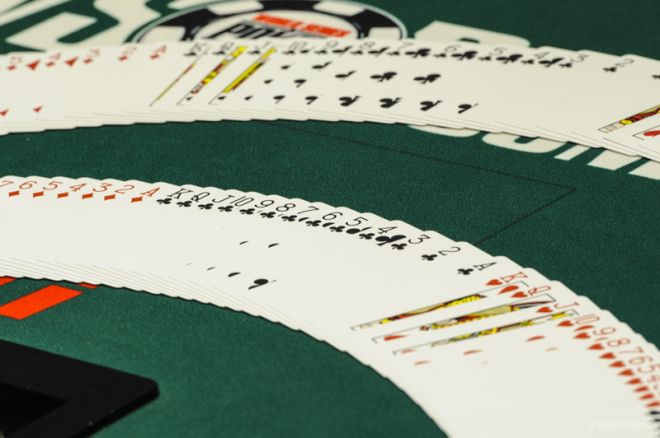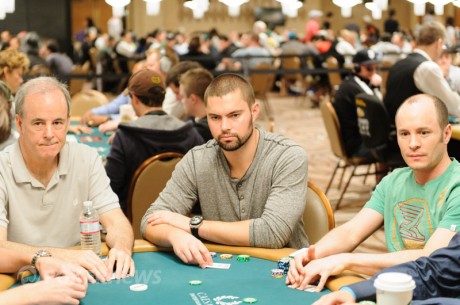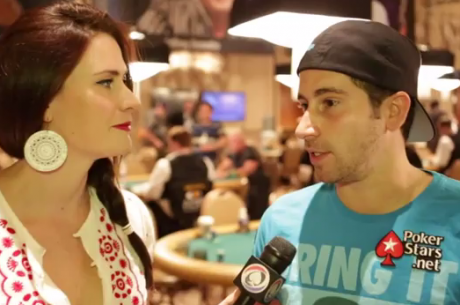Just When You Thought It Was Safe – Big Data Exposes a Small But Common Error in Poker


OneBillionHands.com does in-depth analytics for poker, using a massive hole-card-up database. To learn more about the data, check out the OneBillionHands.com site.
In this hand from Day 7 of the Main Event, Alex Livingston bet Kings on an Ace-high board after the flop checked through. Our friends at OneBillionHands.com show that although this line worked for Livingston, betting the turn is, in general, a small but common error.
A recap of the action:
With a full table, the blinds were at 60k/120k with a 15k ante. Livingston (5.8m in chips) raised to 255k from the hijack with K♥K♣, and Marc McLaughlin (5.415m) called from the button with A♠7♠.
Flop: A♣2♣5♥
Both players checked.
Turn: 10♥
Livingston bet 310k, and McLaughlin called.
River: A♦
Livingston bet 580k, and McLaughlin called.
Skill for Livingston
Relative to the typical player in his shoes – i.e. up against an Ace – Livingston saved eight big blinds over the course of the hand.
By successfully keeping the pot small on the flop, he saved about four big blinds. The rest came from his turn and river bet sizing – he preempted the possibility that a better hand forced him to call larger bets.
Below we analyze Livingston’s turn bet without assuming anything about McLaughlin’s hand.
On the turn, what action is historically best for Livingston?
Checking beats betting by 0.25 big blinds.
We started off by searching our database for all the players that had been in Livingston’s turn situation. Then, we separated those players into two groups: players who checked, and players who bet. Finally, we took the average winnings from each group. On average, the players who checked earned a quarter of a big blind more than the players who bet. This may be due to the fact that, after Livingston’s second check, a player in McLaughlin’s spot bets worse hands 84% of the time.
However, since checking only does slightly better, this information is most useful to ring game multitablers – players who will be in this situation frequently enough to see law-of-large-number returns.
What percentage of the time does a player in Livingston’s shoes bet?
Like Livingston, 57% of players bet in this spot.
Now’s where it gets interesting: the majority of players choose the lower performing action! At least in our data, something seems to be broken in the aggregate.
So what’s to do be done? If you’re in Livingston’s shoes, check the turn a bit more with Kings. And if you’re in McLaughlin’s shoes, check behind on the flop and give the Livingstons of the world a chance to make a small mistake.
Unfortunately for the diehards among you, our data is primarily from 2011, and therefore it may be the case that this aggregate “brokenness” has since corrected itself. But it does seem like we’ve identified an interesting method for finding temporary inefficiencies: identify spots where the majority of players don’t take the best action.
For more poker strategy, make sure to tune in every week for new episodes of the Strategy with Kristy podcast. Feel free to send in questions, ideas or suggestions for the podcast to [email protected]. Also remember to follow PokerNews on Twitter for up-to-the-minute news.








